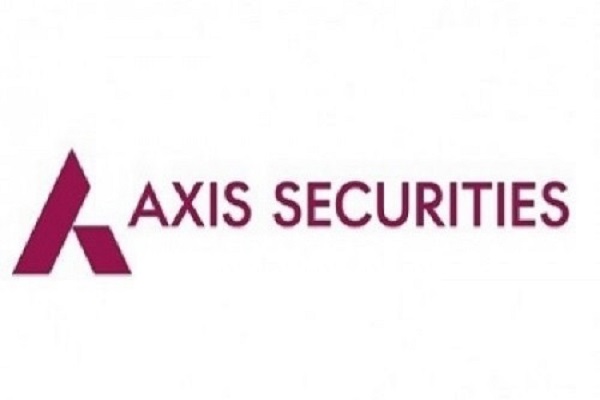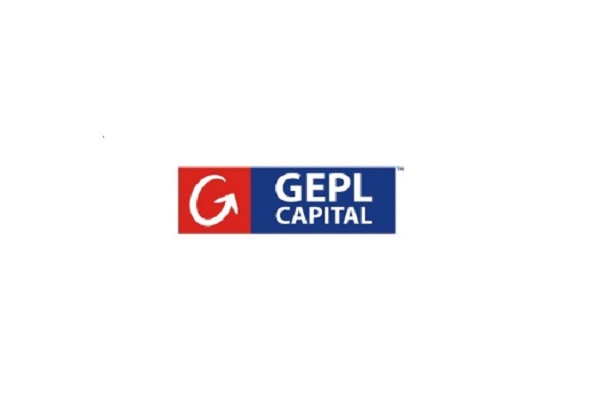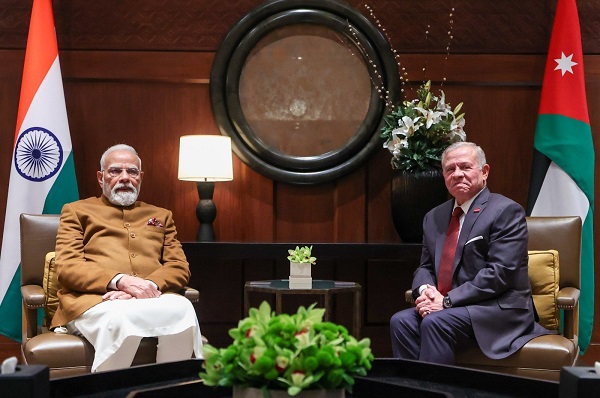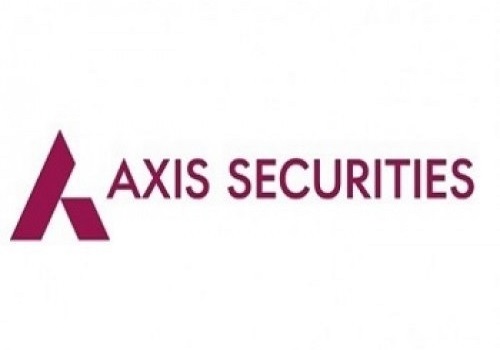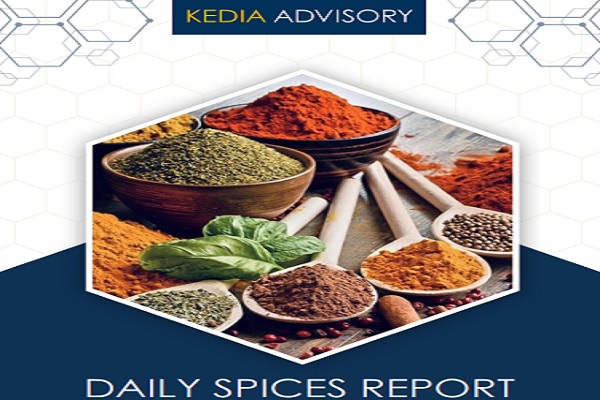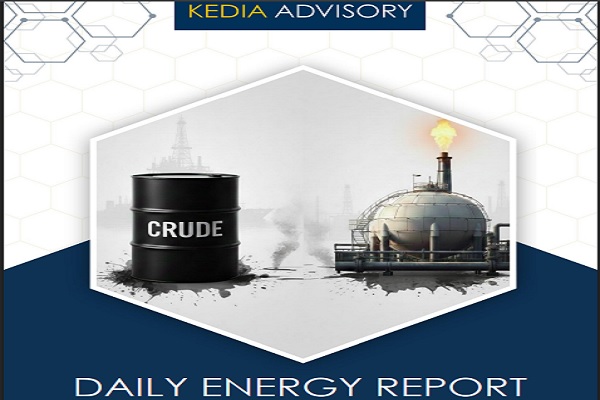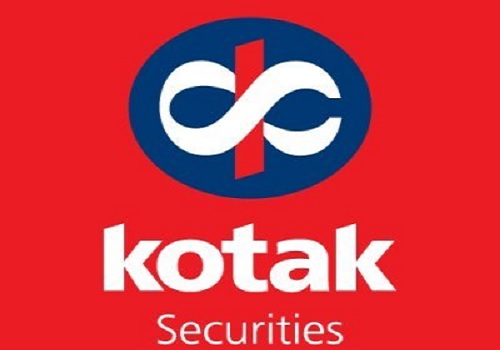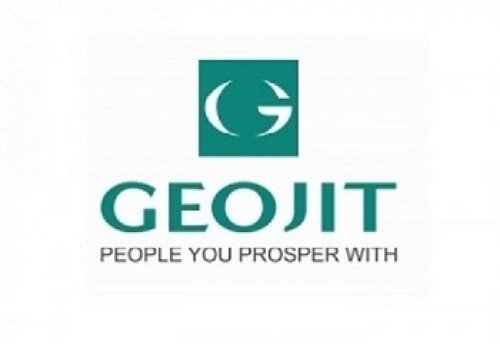Gold trading range for the day is 95990-97970 - Kedia Advisory

Gold
Gold prices edged up by 0.29% yesterday to settle at 97,270, recovering modestly despite signals of easing trade tensions and stronger US labor market data capping aggressive upside moves. While the US announced progress on multiple trade deals and extended tariff reprieves for some countries until August 1, the looming threat of higher tariffs from July 9 continues to keep market sentiment cautious, supporting gold’s safe-haven appeal. This three-week window for negotiations has offered a temporary reprieve, but tariff-related inflation concerns have reduced expectations of imminent rate cuts by the Federal Reserve. Markets now see just two quarter-point cuts by year-end, down from earlier forecasts for a more aggressive easing path, tempering gold’s upside. On the geopolitical front, indirect ceasefire talks between Hamas and Israel in Qatar failed to yield progress, maintaining underlying geopolitical risk and lending mild support to bullion. Meanwhile, central bank interest in gold remained steady. China’s reserves edged up to 73.90 million fine troy ounces at June-end, while Kazakhstan, Turkey, and Poland collectively added 19 tonnes in May, partially offset by Singapore’s 5-tonne sale. Technically, the market is showing fresh buying interest, with open interest up 0.78% to 12,476 as prices rose 280 rupees. Gold has immediate support at 96,630 and a break below could open a test of 95,990. Resistance is seen at 97,620, and a move above could push prices to test 97,970 in the near term.
Trading Ideas:
* Gold trading range for the day is 95990-97970.
* Gold rises as US trade deal progress, tariff reprieve boost sentiment
* Extended tariff reprieve gives countries three-week window before higher US tariff rates start August 1.
* China’s gold reserves stood at 73.90 million fine troy ounces at the end of June, up from 73.83 million ounces at the end of May.
Silver
Silver prices edged lower by 0.10% yesterday to close at 108,321, weighed by easing safe-haven demand after President Donald Trump extended the deadline for reimposing sweeping reciprocal tariffs. Treasury Secretary Scott Bessent confirmed that countries without final trade deals have until April 2 to avoid reverting to previous tariff levels, offering more time for negotiations and slightly calming market nerves. So far, only China, the UK, and Vietnam have partially settled their trade terms with Washington, but the threat of a fresh 10% tariff on countries perceived as aligning with “anti-American policies on BRICS” continues to inject an element of uncertainty into global trade flows. Adding to the pressure on silver, the stronger-than-expected US labor market data further dampened hopes for an imminent Federal Reserve rate cut. The US economy added 147,000 jobs in June, beating estimates and lifting confidence in the economic outlook, which eased recession fears and supported the dollar. Meanwhile, the unemployment rate dipped to 4.1%, against expectations of a rise to 4.3%, while average hourly earnings grew by a modest 0.2%. Fundamentally, silver’s medium-term backdrop remains underpinned by supply deficits. Technically, silver is under long liquidation, reflected by a 0.21% drop in open interest to 16,409 lots while prices dipped by 108 rupees. The immediate support sits at 107,325, below which prices could test 106,335. Resistance is now seen at 108,850, with a break above opening room to test 109,385.
Trading Ideas:
* Silver trading range for the day is 106335-109385.
* Silver prices fell as Trump extended deadline for reimposing sweeping reciprocal US import tariffs
* Treasury Secretary confirmed tariffs revert to April 2 levels for countries lacking trade agreements.
* Strong US jobs data dampened expectations for a Federal Reserve rate cut this July.
Crude oil
Crude oil prices climbed by 1.86% yesterday to settle at 5,796, buoyed by strength in the physical market and resilient demand outlook despite OPEC+ announcing a larger-than-expected production increase for August. Eight OPEC+ members agreed to raise output by 548,000 barrels per day next month—significantly higher than the previous pace of 411,000 bpd added per month between May and July. This move signals the group’s confidence in robust market fundamentals, supported by Saudi Arabia raising its official selling prices for Asia, indicating tightness in physical crude supplies. Despite the output hike, the market shrugged off potential bearish signals as traders focused on continued strength in demand. The US crude inventory data showed a surprising build of 3.845 million barrels for the week ending June 27, against expectations for a drawdown of 2 million barrels, although this was offset by a draw of 1.493 million barrels at Cushing, the key delivery hub. Looking ahead, the International Energy Agency reaffirmed its view that global oil demand will peak at 105.6 million bpd by 2029 before slightly declining in 2030, contrasting OPEC’s more bullish outlook for sustained consumption growth. Technically, crude oil is under fresh buying as open interest rose by 1.83% to 12,356 lots while prices gained 106 rupees. Immediate support lies at 5,637; a break below could see prices test 5,478. On the upside, resistance is now seen at 5,898, with a break higher potentially pushing prices toward the 6,000 mark.
Trading Ideas:
* Crudeoil trading range for the day is 5478-6000.
* Crude oil rose, shrugging off OPEC+ decision to hike output more than expected.
* OPEC+ announced 548,000 barrels daily increase for August, up from prior 411,000 bpd hikes.
* Saudi Arabia raised Asian crude prices, signaling physical oil markets remain tight despite supply boost.
Natural gas
Natural gas prices climbed by 1.72% yesterday to close at 295.8, supported by hotter mid-July weather forecasts that are expected to lift air conditioning demand and drive up power sector gas consumption. Meteorologists predict that weather across the Lower 48 U.S. states will stay warmer than normal through at least July 22, keeping cooling demand strong. LSEG expects average gas demand, including exports, to rise from 105.9 bcfd this week to 107.5 bcfd next week, reflecting increased usage by households and utilities. However, gains were somewhat capped by rising production and continued robust storage injections. So far in July, average gas output in the Lower 48 has climbed to 107.0 bcfd, up from a monthly record of 106.4 bcfd in June. Despite the hot weather, this output strength is allowing utilities to add more gas into storage than normal for this time of year. Last week, U.S. utilities injected 55 bcf of gas into storage, exceeding expectations of 53 bcf and marking the 11th consecutive week of above-average injections. Total stocks now stand at 2.953 tcf, supporting confidence in ample supply ahead of peak summer cooling demand. On the export front, flows to U.S. LNG export facilities rose to 15.5 bcfd so far in July, up from 14.3 bcfd in June, as maintenance constraints ease. Technically, the market shows fresh buying with open interest up by 0.2% to 25,048 lots, alongside a 5 rupee gain. Support lies at 285.4, below which prices could test 274.9. Resistance is seen at 302.4, and a move above could open the path to 308.9.
Trading Ideas:
* Naturalgas trading range for the day is 274.9-308.9.
* Natural gas up as hotter mid-July forecast boosts AC demand next two weeks
* Warmer-than-normal weather forecast through July 22 should boost cooling demand modestly this month.
* LSEG cut this week’s demand forecast slightly but expects higher demand next week near 107.5 bcfd.
Copper
Copper yesterday settled slightly lower by 0.29% at 889.3, as traders weighed escalating global trade tensions against signs of underlying supply tightness. The market retreated as President Donald Trump renewed threats of a 10% tariff on countries perceived to align with “anti-American policies on BRICS,” a move that reignited worries about potential headwinds for global growth and industrial metal demand. This cautious tone reversed some of last week’s momentum when copper hit a three-month high, driven by aggressive inventory drawdowns and shipment redirection to the US ahead of anticipated tariffs. Latest warehouse data showed copper inventories at the Shanghai Futures Exchange rising by 3.7% week-on-week, hinting at slightly improved short-term availability despite broader supply tightness. On the LME, canceled warrants totaled 31,900 tons, indicating steady planned withdrawals. Fundamentally, the International Copper Study Group reported a swing to a global refined copper market deficit of 50,000 metric tons in April, compared to a surplus in March, highlighting a tighter balance sheet. However, China’s copper imports dipped 2.5% in May from April’s record levels, with unwrought copper and product imports down nearly 17% year-on-year, suggesting that smelters maintained output even amid softer buying. Technically, the market is witnessing long liquidation, with open interest falling by 1.79% to 8,008 lots while prices edged down by 2.6 rupees. Immediate support is at 886.5, with further weakness likely toward 883.5 if breached. On the upside, resistance stands at 892.2; a decisive break above could push prices toward 894.9 in the near term.
Trading Ideas:
* Copper trading range for the day is 883.5-894.9.
* Copper fell as investors continued to grapple with global trade uncertainties.
* Copper inventories in warehouses monitored by the Shanghai Futures Exchange rose 3.7% from last Friday, the exchange said.
* Chinese manufacturing surprisingly expanded in June, supporting optimism for copper demand.
Zinc
Zinc yesterday settled lower by 0.93% at 254.3, weighed down by persistent concerns over U.S. trade negotiations and the potential for higher tariffs ahead of President Donald Trump’s July 9 deadline. While the U.S. is reportedly close to finalising multiple trade deals, the uncertainty about the scope and timing of tariff hikes continues to pressure base metals sentiment. Adding to the cautious mood, zinc inventories at the Shanghai Futures Exchange rose 4% week-on-week, suggesting softer spot demand. Deliverable zinc stocks jumped by 800 tonnes in the last week of June, reflecting manufacturers’ reluctance to take deliveries amid China’s persistent factory weakness. However, downside for zinc remains somewhat limited by supply-side constraints and improving consumer trends in China. Mined output from Teck Resources’ Red Dog Mine, the world’s largest zinc mine, dropped by 20% in Q1, while Australia’s major smelter Nyrstar announced a 25% output cut this year due to ore shortages and low treatment charges. Globally, the zinc market surplus narrowed to 16,000 tonnes in April from 23,400 tonnes in March, according to the International Lead and Zinc Study Group. Meanwhile, China’s refined zinc production dipped by 1% month-on-month in May, with cumulative output for January-May rising only slightly, undershooting forecasts. Technically, the zinc market is under long liquidation as open interest fell by 4.15% to 3,322 lots, alongside a drop of 2.4 rupees. Immediate support is now seen at 253.5, with a breach likely to test 252.6. On the upside, resistance is pegged at 255.6, and a move above could open the path towards 256.8 levels.
Trading Ideas:
* Zinc trading range for the day is 252.6-256.8.
* Zinc prices fell pressured by concerns over U.S. trade negotiations and uncertainty surrounding potential tariffs.
* US to notify about a dozen countries of higher tariff rates starting next Monday.
* Shanghai zinc inventories rose 4% last week, signaling weaker manufacturing offtake amid soft demand.
Aluminium
Aluminium yesterday settled lower by 0.42% at 247.45, pressured by ongoing trade policy uncertainties and fresh supply updates. President Donald Trump’s announcement that the United States is close to finalising several trade agreements and will notify countries of higher tariff rates by July 9 stirred caution in industrial metals markets. The threat of an additional 10% tariff on BRICS-aligned nations added to the geopolitical risk premium but failed to lift aluminium prices as broader demand signals remained soft. On the supply side, aluminium stocks in LME warehouses rose by over 20,000 tons since late June, pushing total inventories to 356,975 tons, with cancelled warrants at just 2%, suggesting low short-term demand for delivery. China’s aluminium production continues to grow, climbing 5% year-on-year to 3.83 million metric tons in May, with total output for the first five months of 2025 up 4% at 18.59 million metric tons. Meanwhile, China’s aluminium exports in May rose 5.6% month-on-month but remained 3.2% lower year-on-year, showing mixed trade signals. Global primary aluminium output rose 1.5% YoY to 6.245 million tonnes in May, according to the International Aluminium Institute. Technically, aluminium is under long liquidation as open interest fell by 6.52% to 3,711 lots, with prices down by 1.05 rupees. Support is now pegged at 246.8, with a drop below this level potentially testing 246. On the upside, resistance is seen at 248.2, and a move above could push prices toward 248.8.
Trading Ideas:
* Aluminium trading range for the day is 246-248.8.
* Aluminium fell after Trump signaled imminent new trade deals and higher tariffs by early August.
* LME aluminium stocks jumped over 20,000 tons to 356,975 since June 25, adding supply pressure.
* China’s official manufacturing PMI showed continued contraction, though supply concerns offset weak demand fears.
Turmeric
Turmeric yesterday closed lower by 2.54% at 13,058, extending losses as favourable monsoon conditions raised expectations of increased sowing this season. Arrivals edged higher to 13,660 quintals versus 11,940 quintals in the previous session, highlighting a steady rise in market availability. Dry weather has supported timely planting, with early estimates suggesting turmeric acreage could rise by 15–20% as farmers opt for this crop over less profitable alternatives. For the 2024–25 season, the turmeric area stands at 3.30 lakh hectares—10% higher than last year’s 3 lakh hectares. However, despite the expanded acreage, overall output may not jump significantly due to concerns over untimely rains and lower yield potential in key belts like Nanded, where small rhizomes and crop rot are weighing on productivity. Despite this, the downside in prices may be limited as traders remain watchful of tight availability and quality differences. At Duggirala, the market remains active, with new arrivals fetching a premium over old stocks due to superior quality, keeping daily trade volumes robust at around 1,000–1,200 bags. On the export front, India shipped 14,956.80 tonnes of turmeric in April 2025, up 6% year-on-year but marginally down by 0.92% from March 2025. Technically, the market is under fresh selling, with open interest rising by 1.12% to 18,115 lots while prices dropped by 340. Immediate support is pegged at 12,800, with a fall below likely to test 12,542. Resistance is seen at 13,478, and a break above could push prices towards 13,898.
Trading Ideas:
* Turmeric trading range for the day is 12542-13898.
* Turmeric prices dropped due to expected increase in acreage.
* Turmeric acreage is expected to increase by 15-20% this season, supported by low competitive crop prices.
* In April 2025 around 14,956.80 tonnes were exported as against 14,109.10 tonnes in April 2024 showing a rise of 6%.
* In Nizamabad, a major spot market, the price ended at 14301.2 Rupees dropped by -0.35 percent.
Jeera
Jeera yesterday closed lower by 0.89% at 19,545 as the spice continued to face selling pressure amid sluggish domestic and export demand following the end of the retail season. The dip was primarily attributed to the seasonal slowdown and muted interest from foreign buyers, who are relying on existing stocks to meet immediate needs. Comfortable supply levels are adding to the downside, with farmers reportedly holding around 20 lakh bags, of which only 3–4 lakh bags are expected to be traded before the season ends. This will likely leave a significant carry-forward stock of about 16 lakh bags, adding to bearish sentiment. Production prospects for the current season remain steady, with India’s total jeera output estimated at 90–92 lakh bags—lower than last year’s 1.10 crore bags but still ample to cover demand. Gujarat’s production is pegged at 42–45 lakh bags, while Rajasthan is expected to produce around 48–50 lakh bags. Meanwhile, production shortfalls in other key jeera-growing countries like Syria, Turkey, and Afghanistan due to geopolitical tensions and adverse weather could limit global supply, potentially supporting Indian exports if overseas demand revives. Technically, the market is under long liquidation, with open interest down by 9.26% to settle at 4,497 lots while prices dropped 175. Jeera now has immediate support at 19,390; a break below could drag it further to 19,240. On the upside, resistance is seen at 19,780, with a move above possibly testing 20,020. Overall, while fundamentals remain bearish short-term, tight overseas supplies could cap deeper downside.
Trading Ideas:
* Jeera trading range for the day is 19240-20020.
* Jeera dropped due to weak domestic and export demand post retail season.
* However downside seen limited on strong export demand and easing geopolitical concerns.
* Total arrivals witnessed a marginal increase to 12,000 bags (55 kg each) as against 11,800 bags on the previous day.
* In Unjha, a major spot market, the price ended at 20307.4 Rupees dropped by -0.24 percent.
Views express by all participants are for information & academic purpose only. Kindly read disclaimer before referring below views





